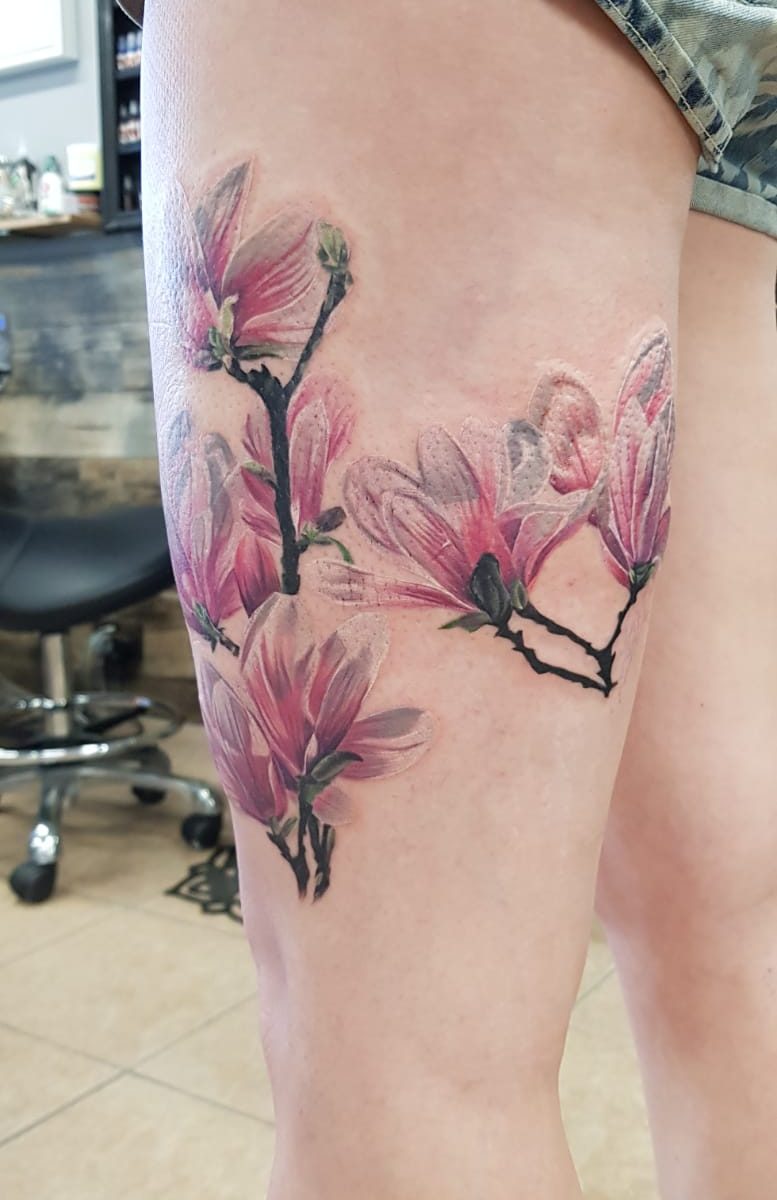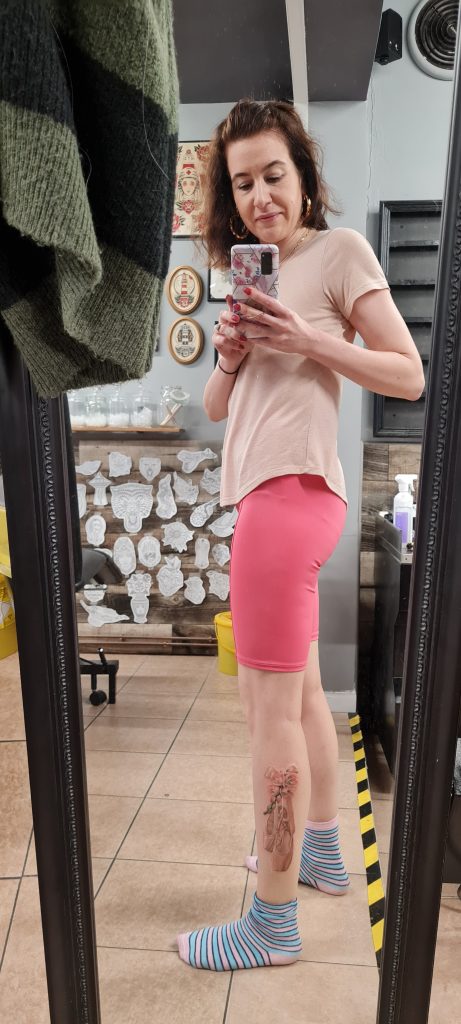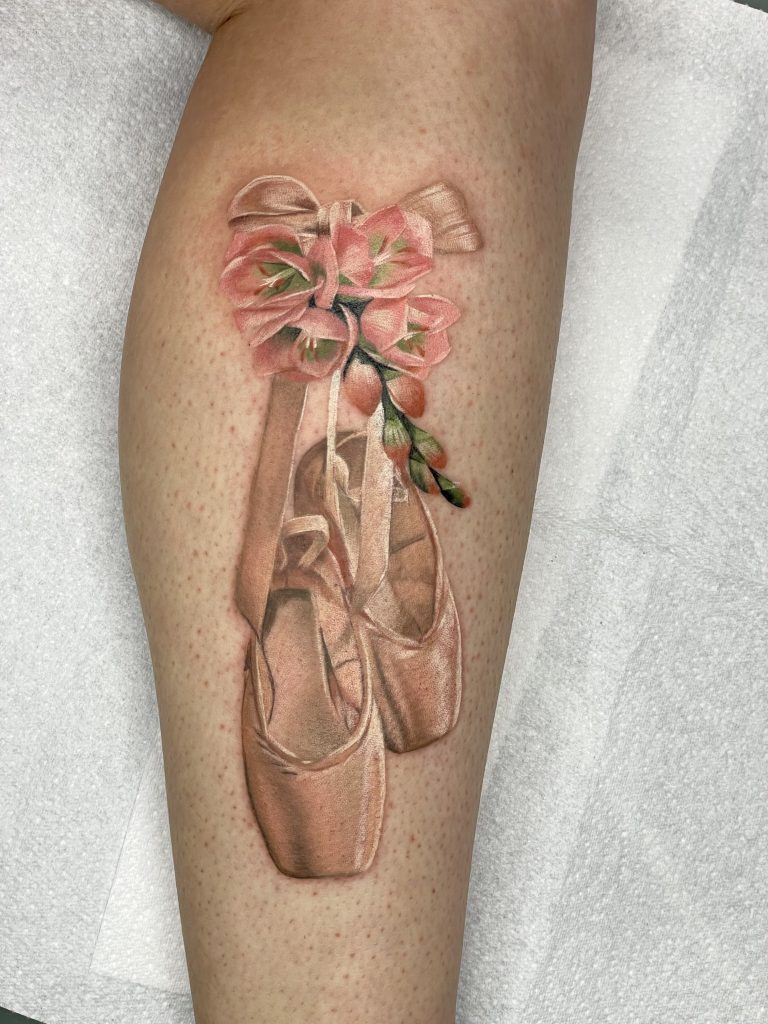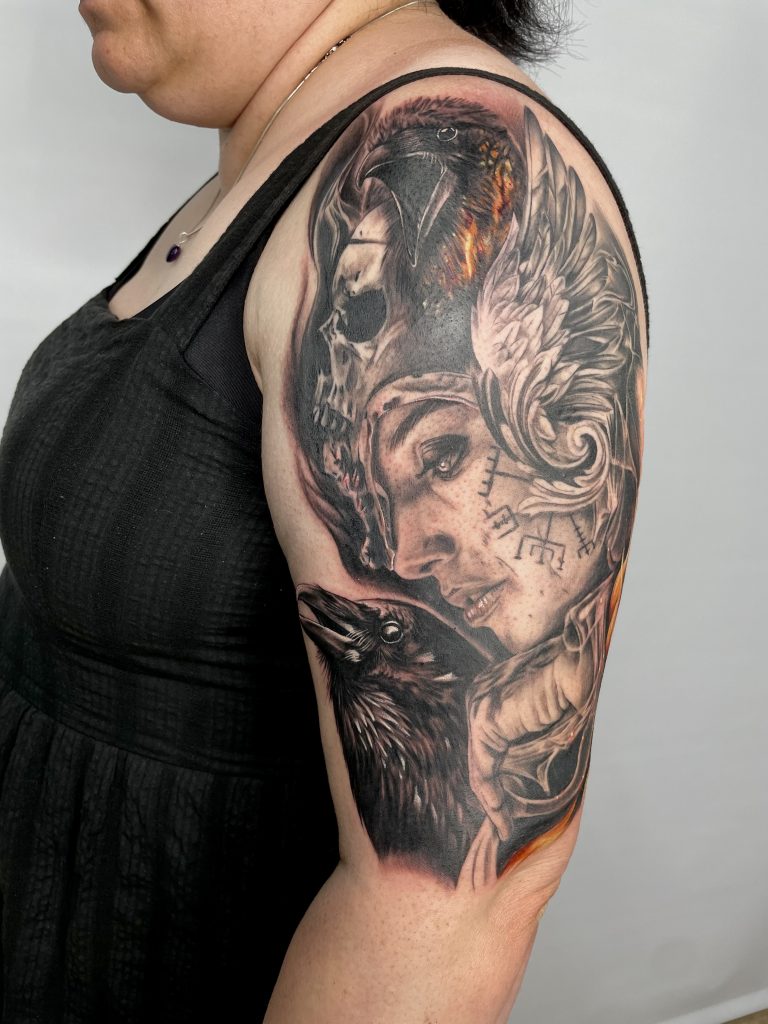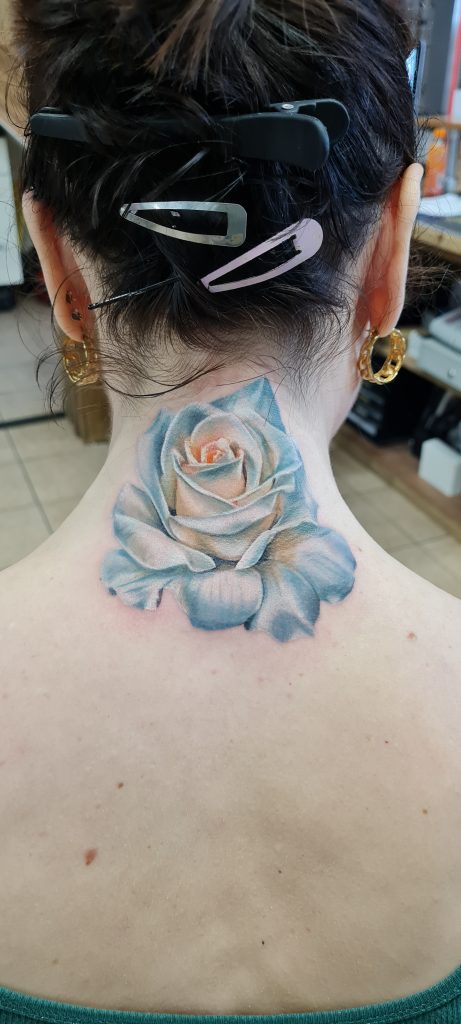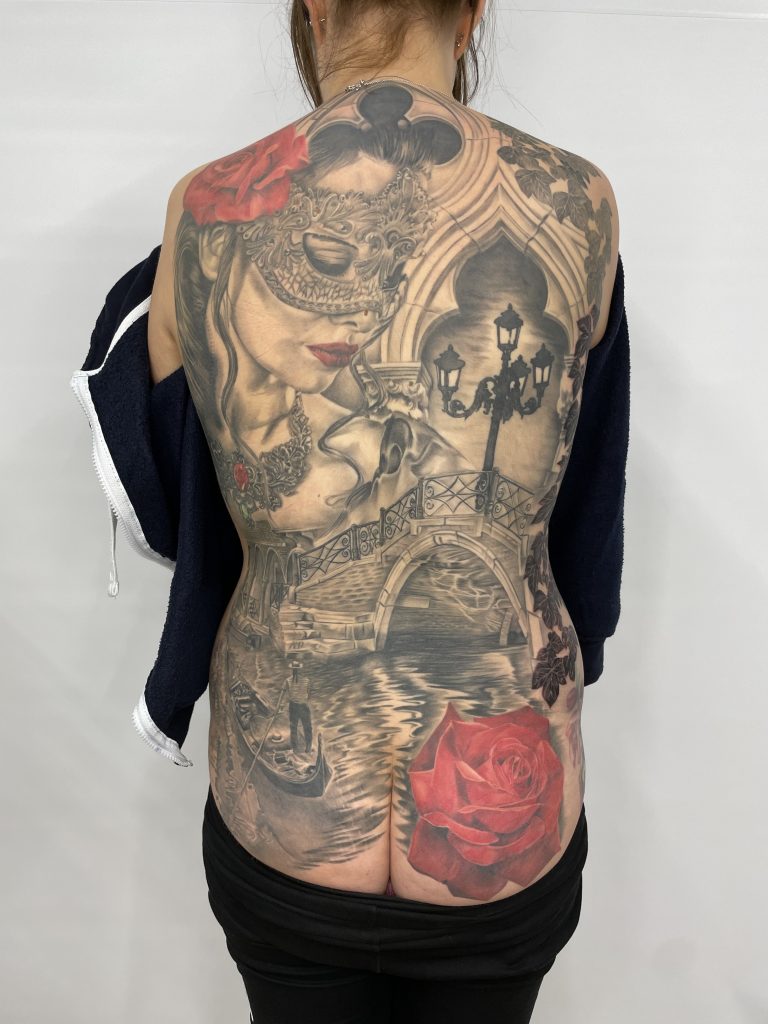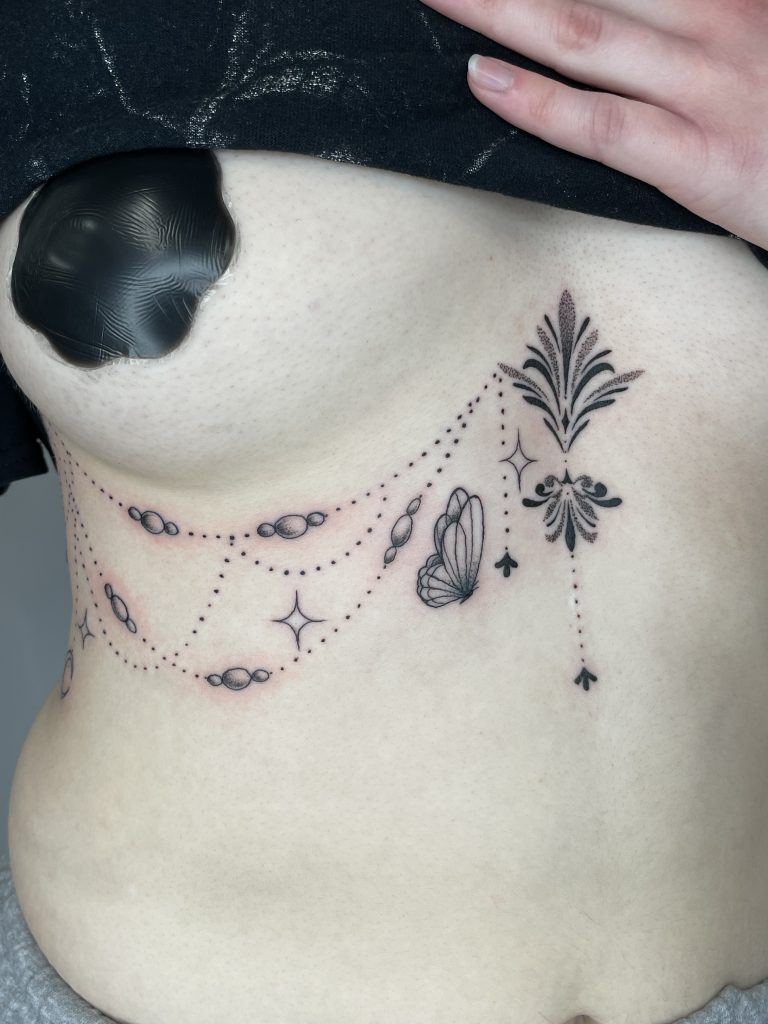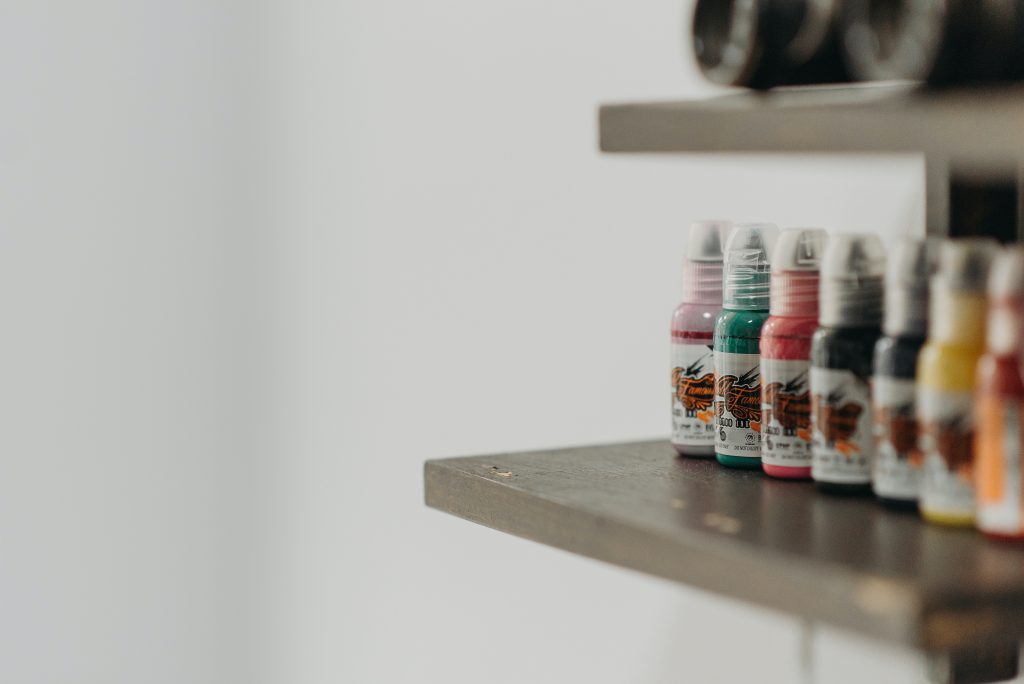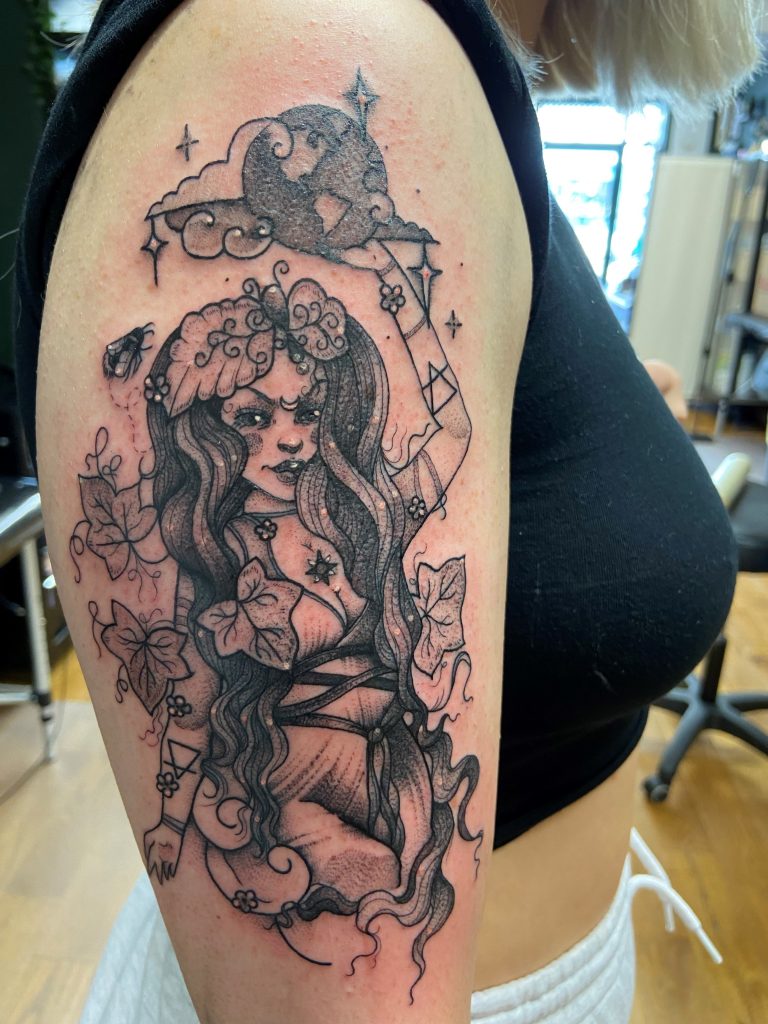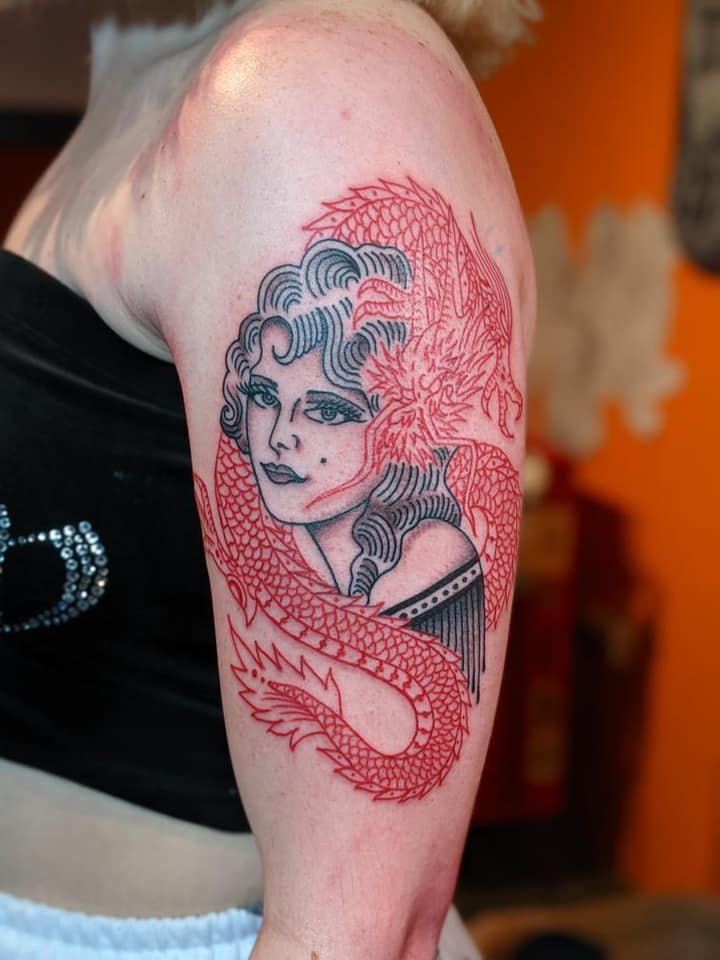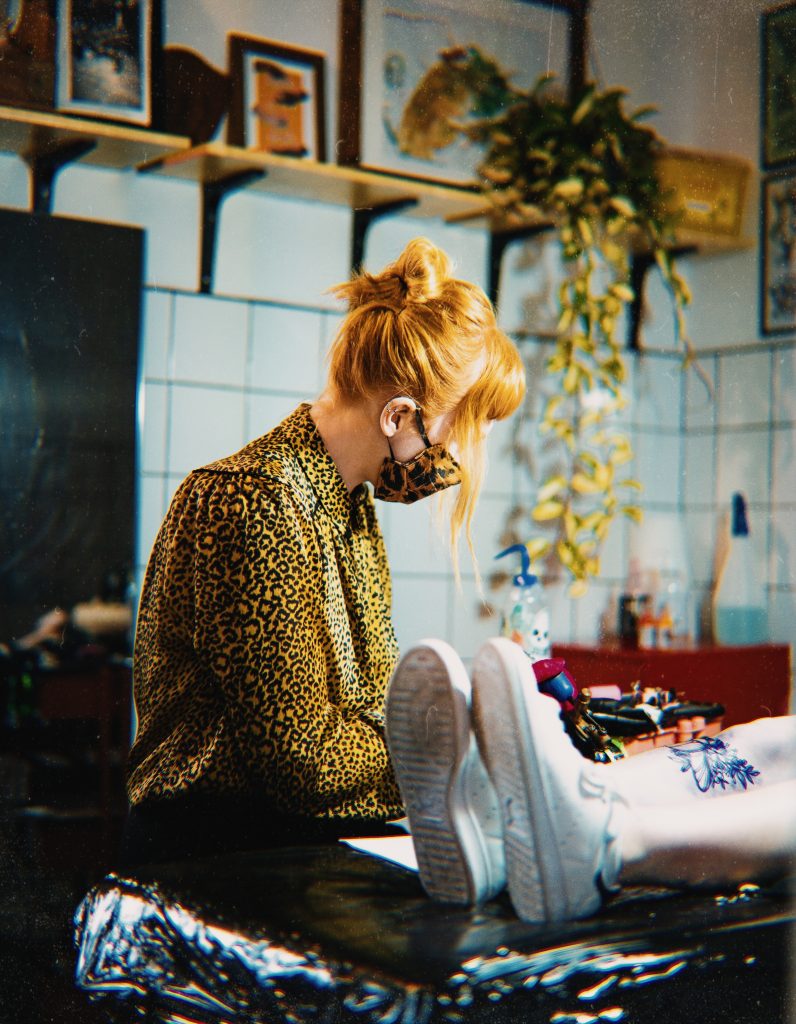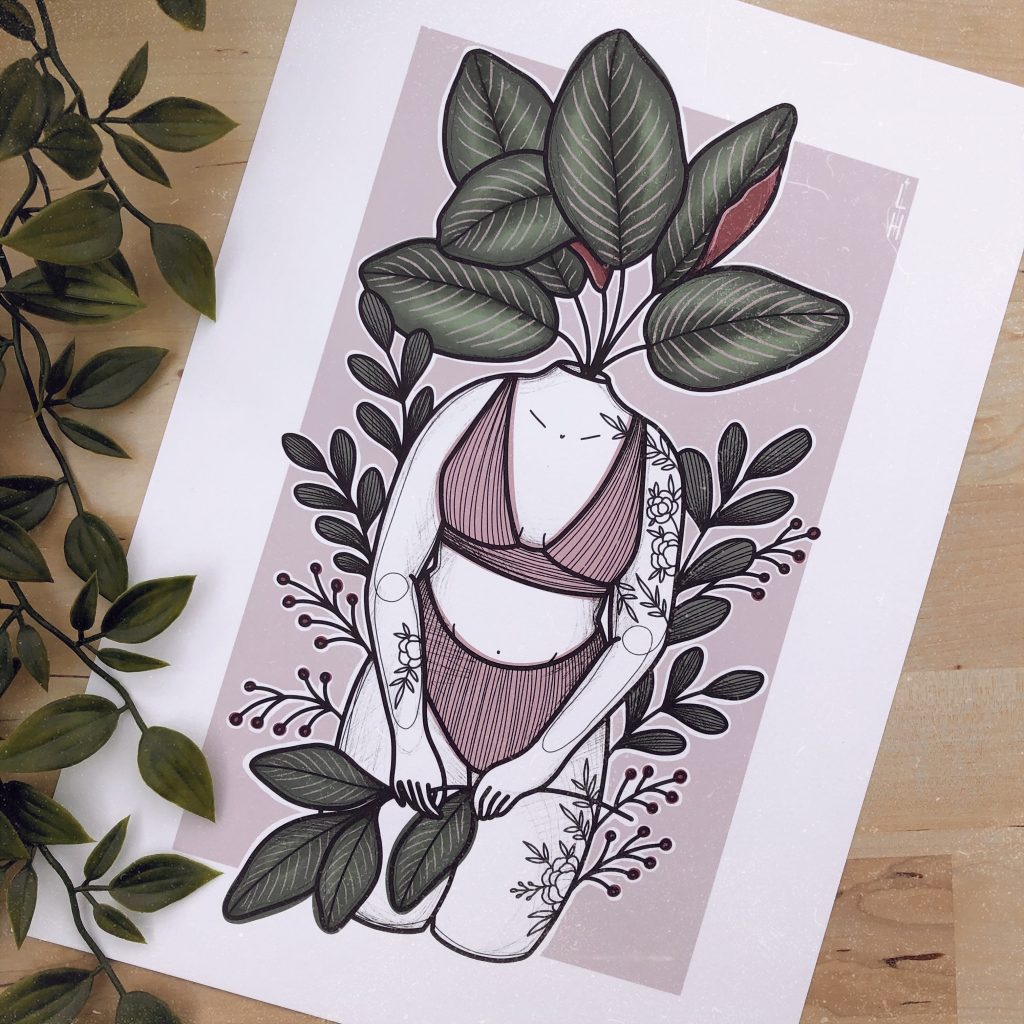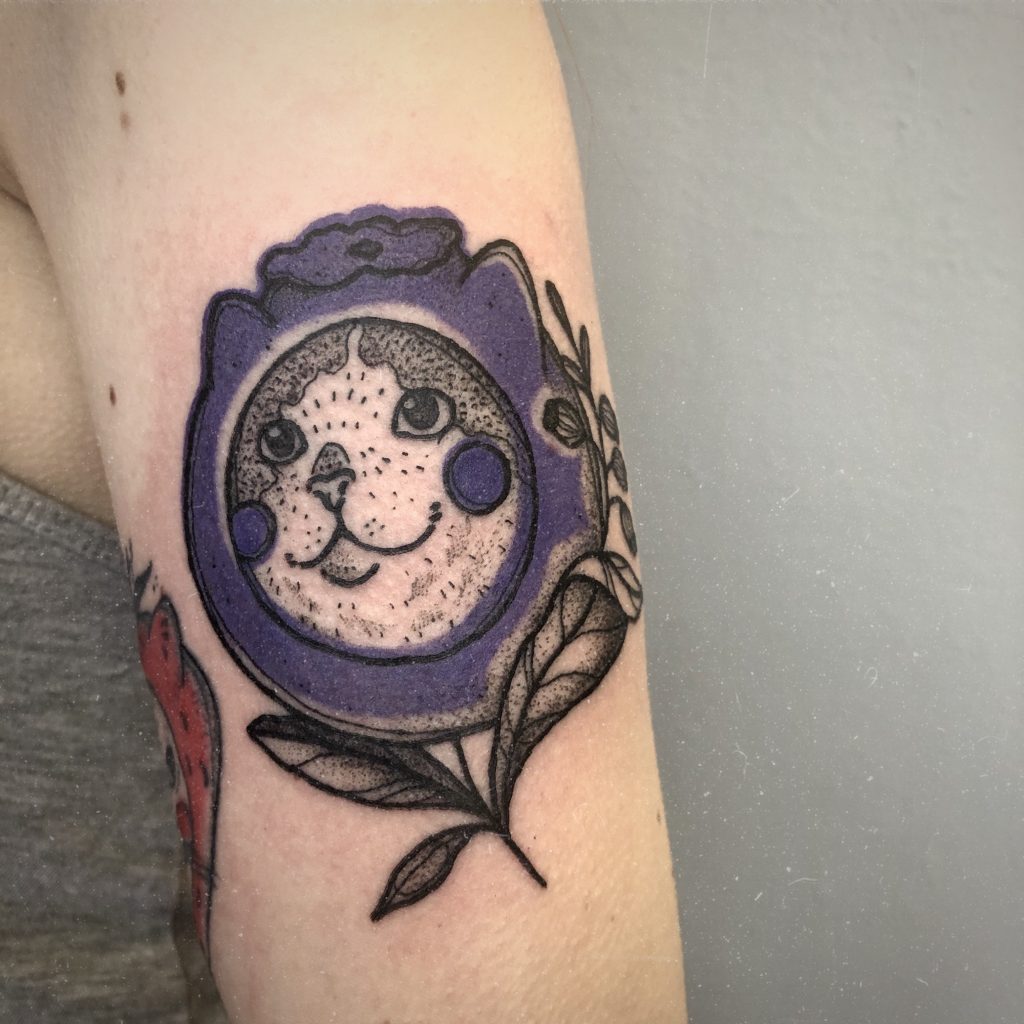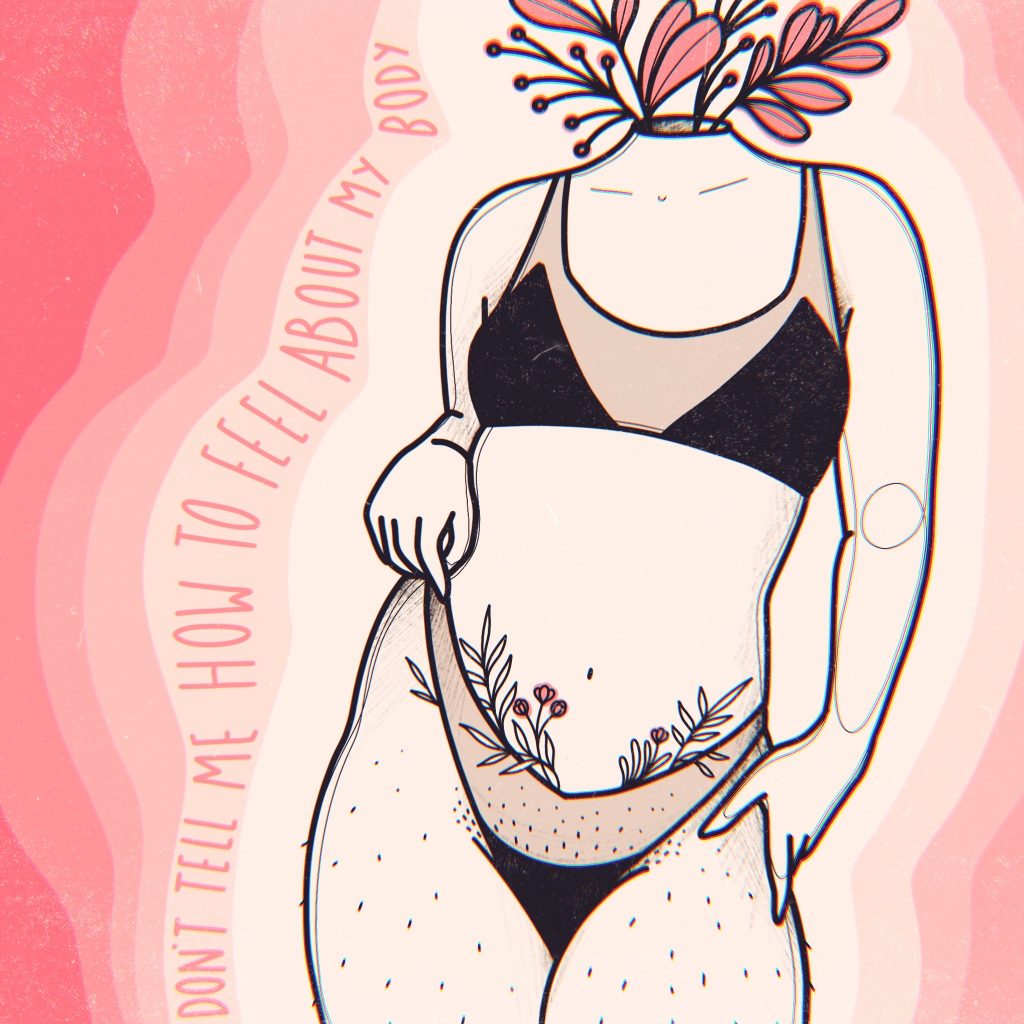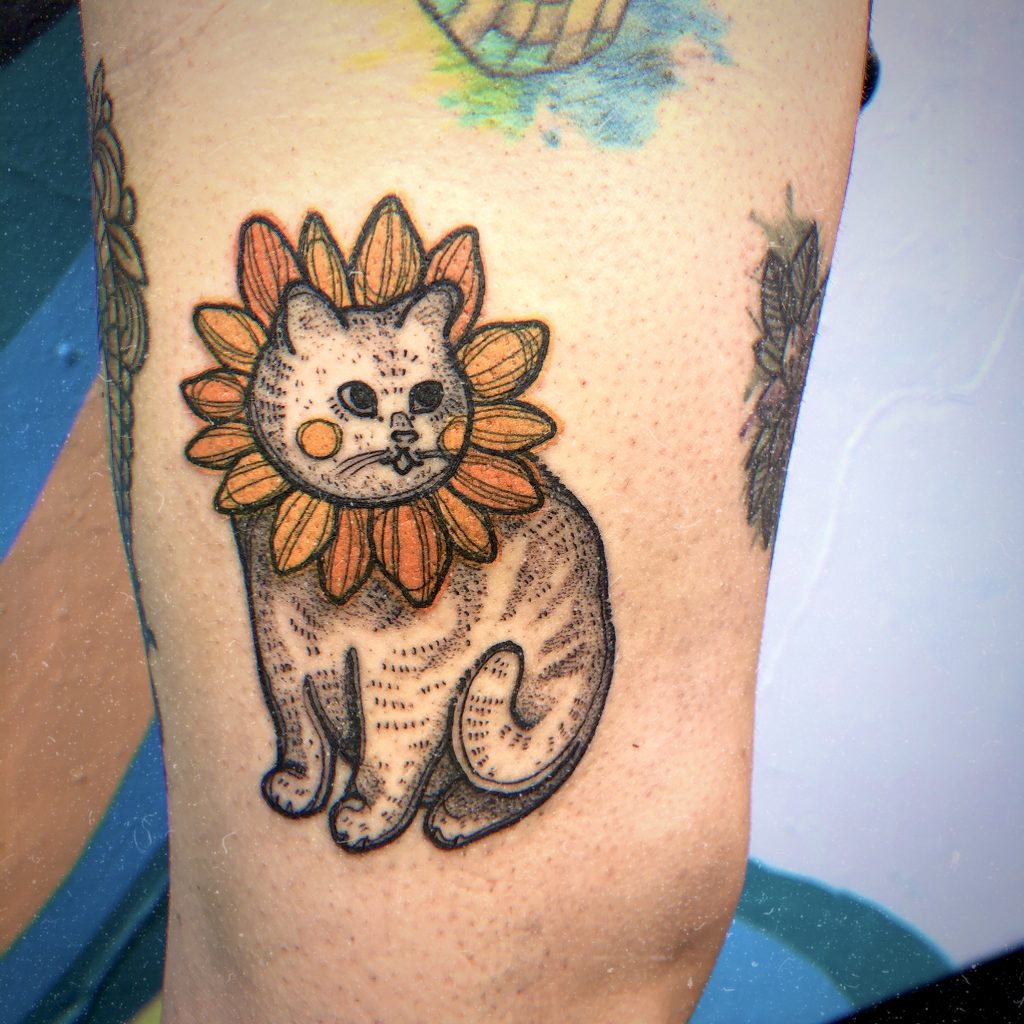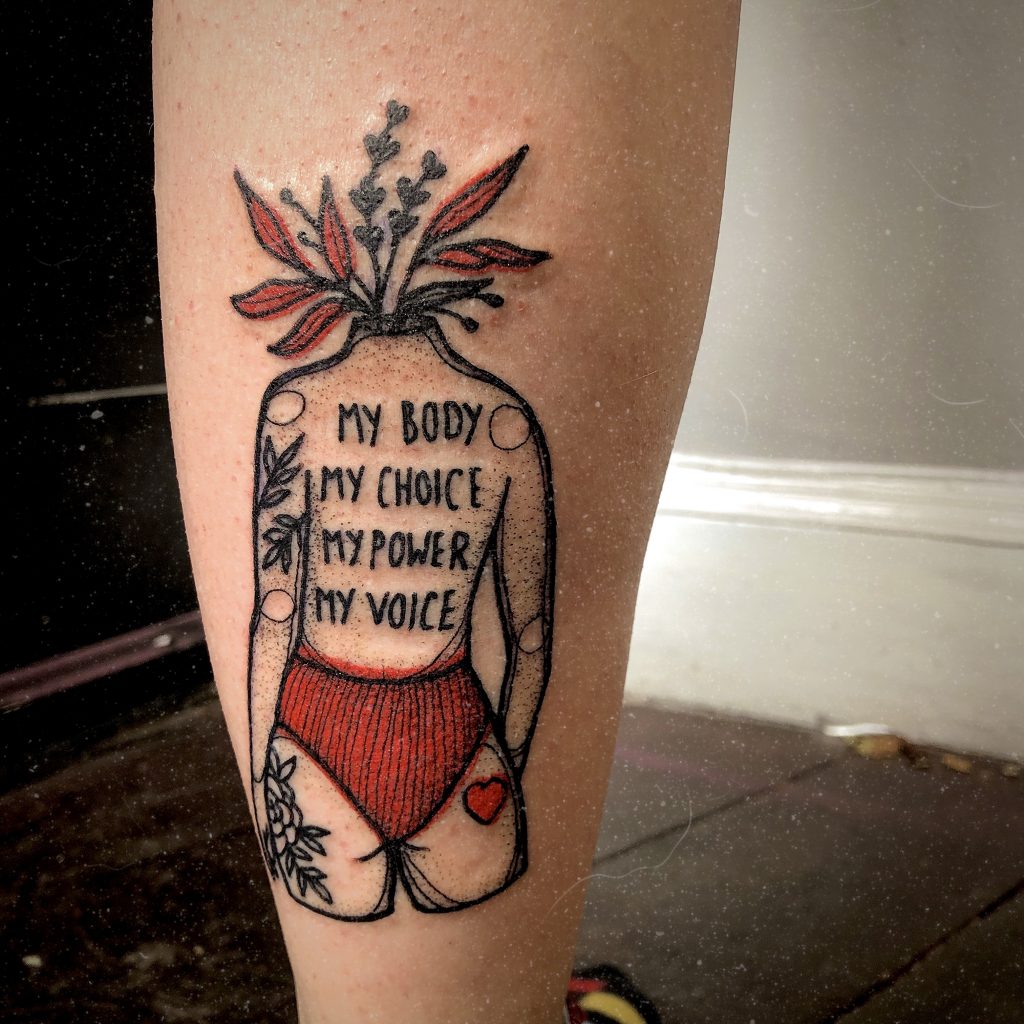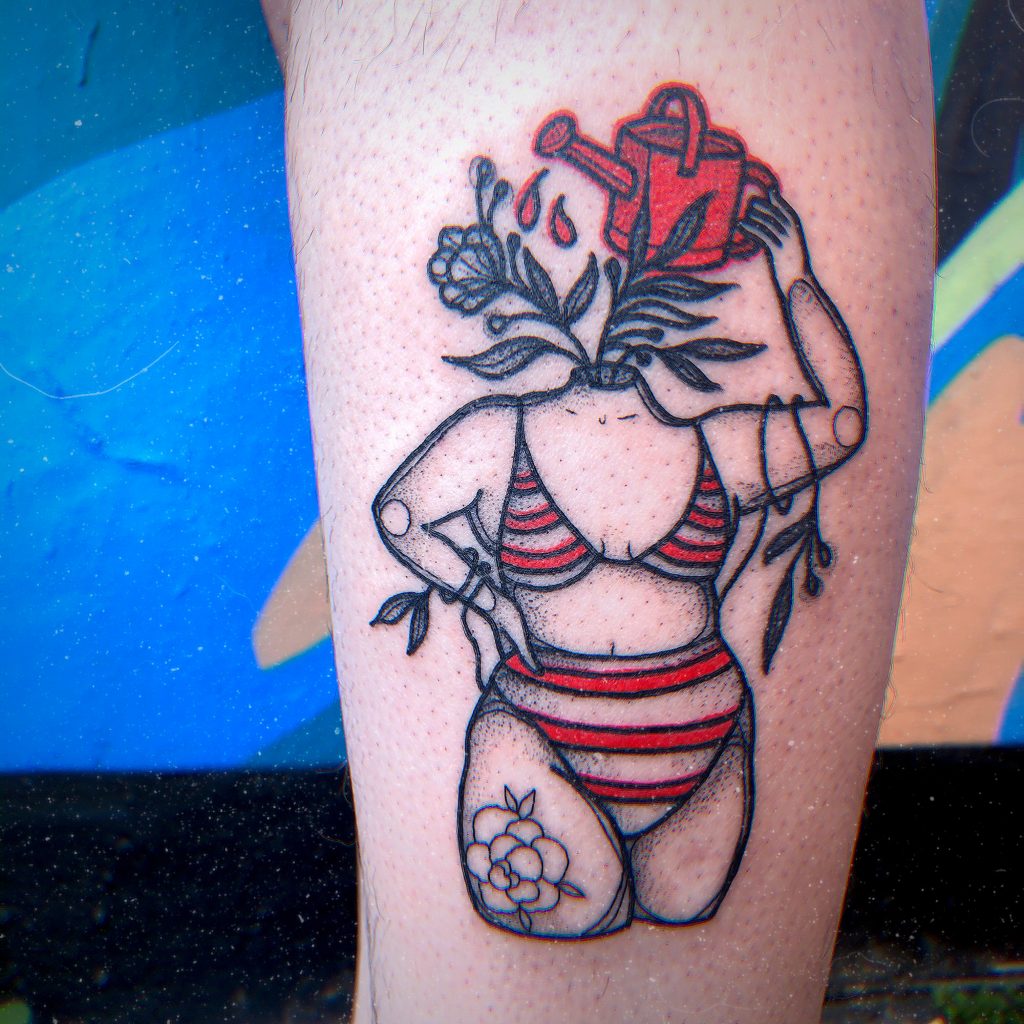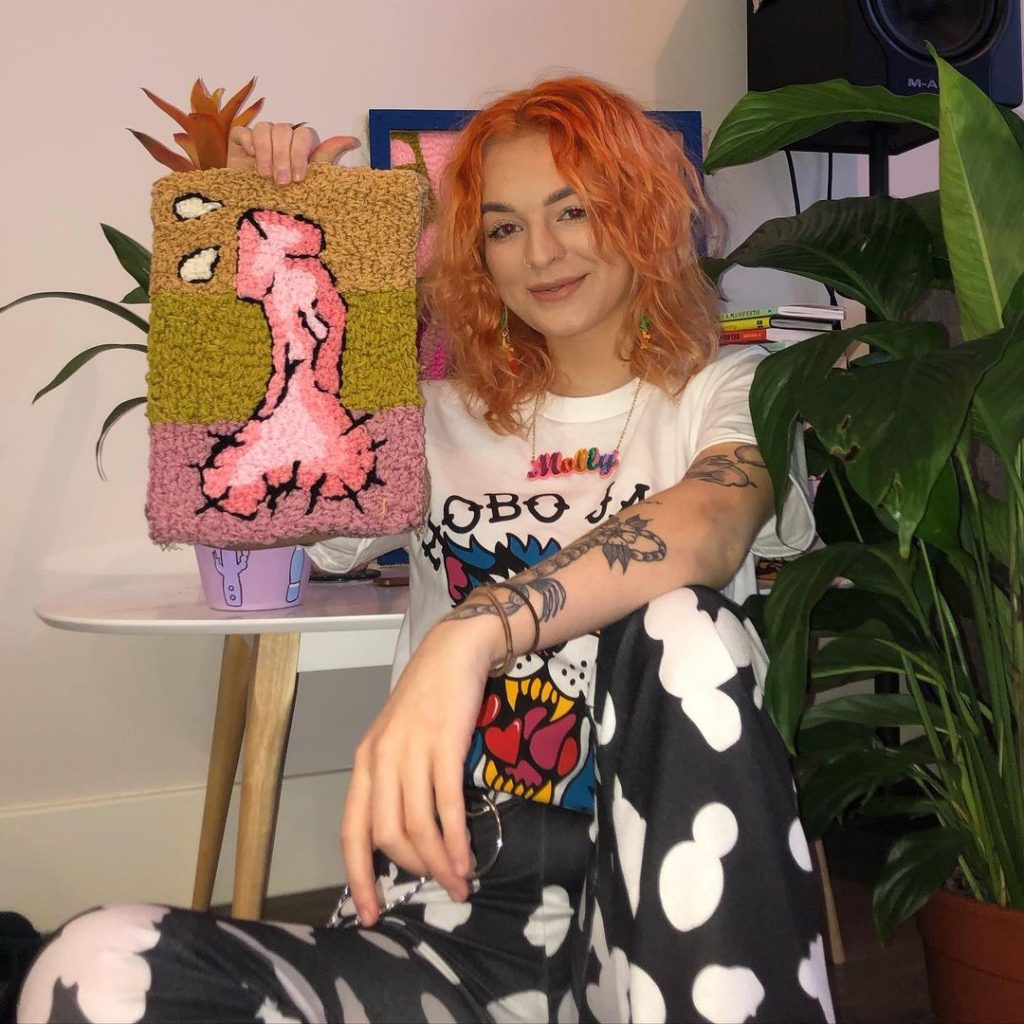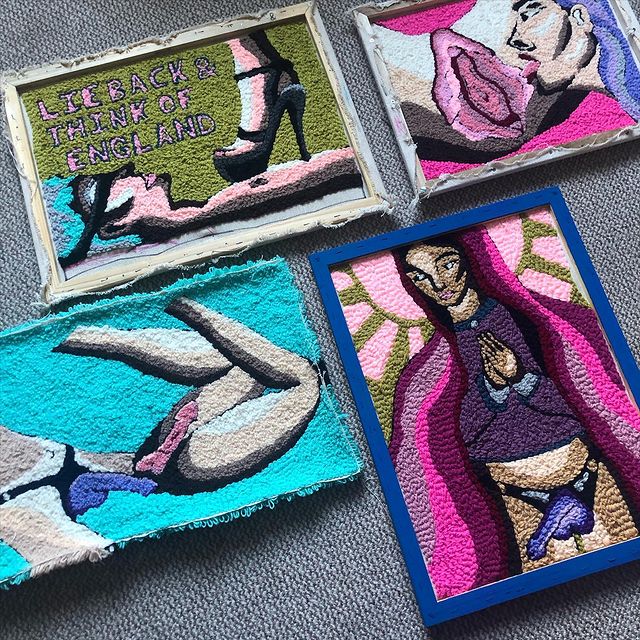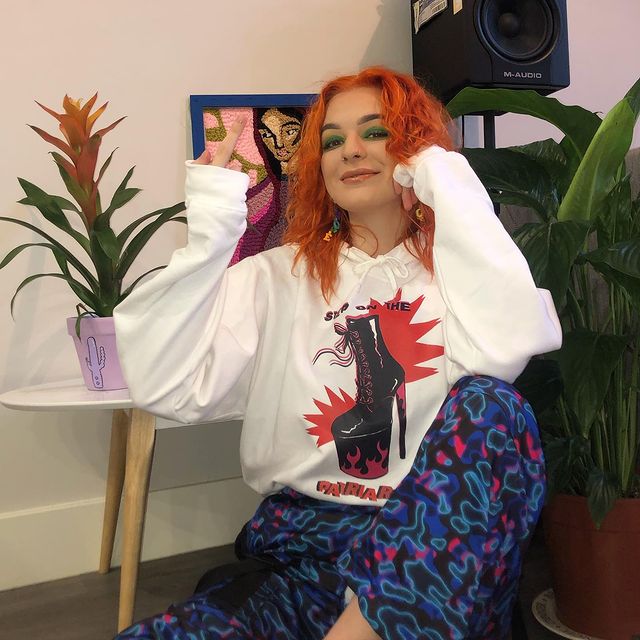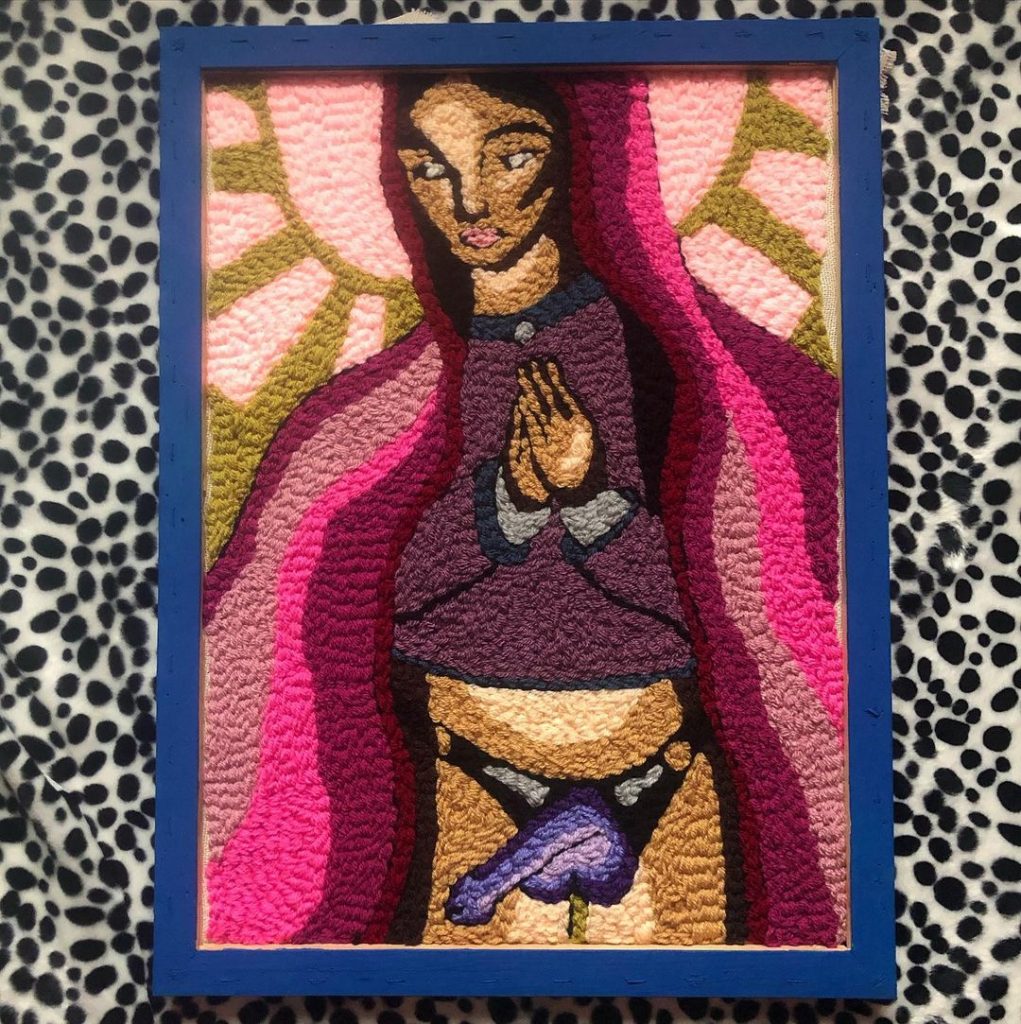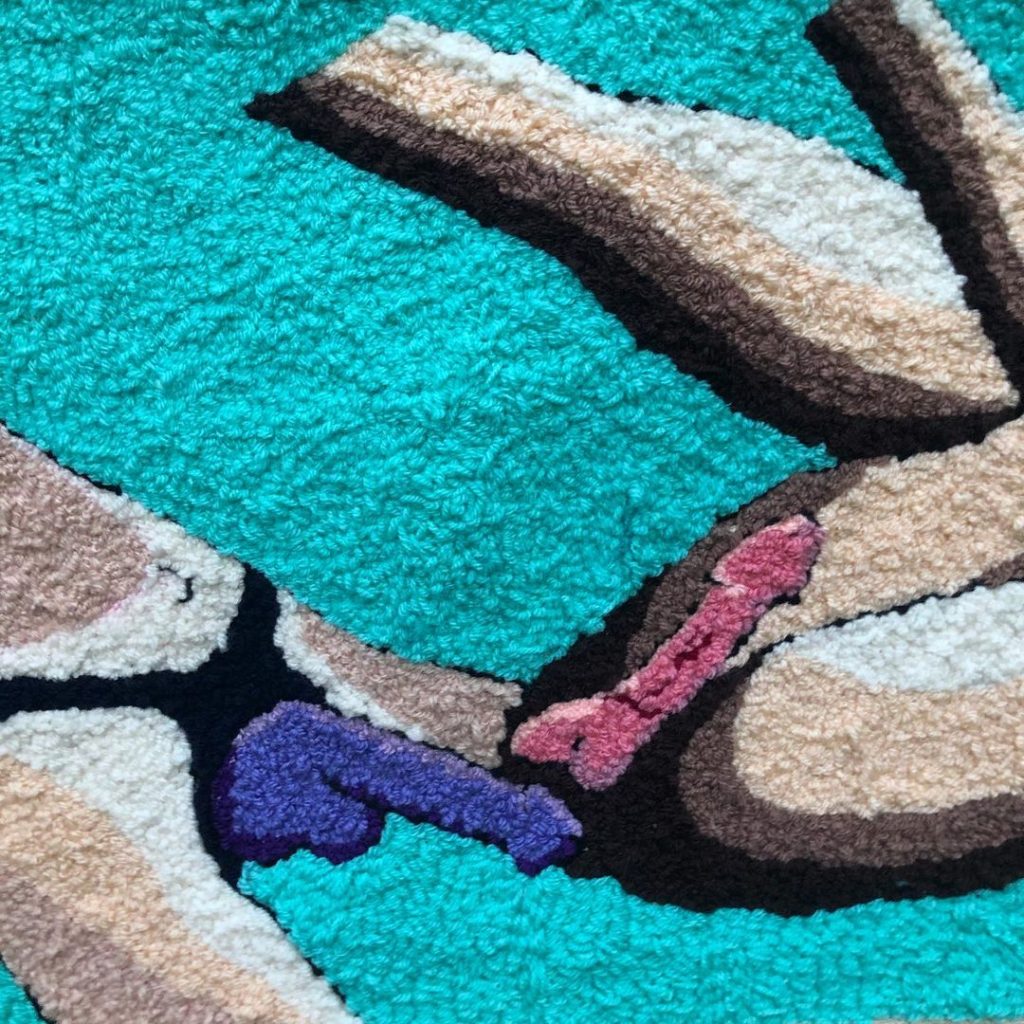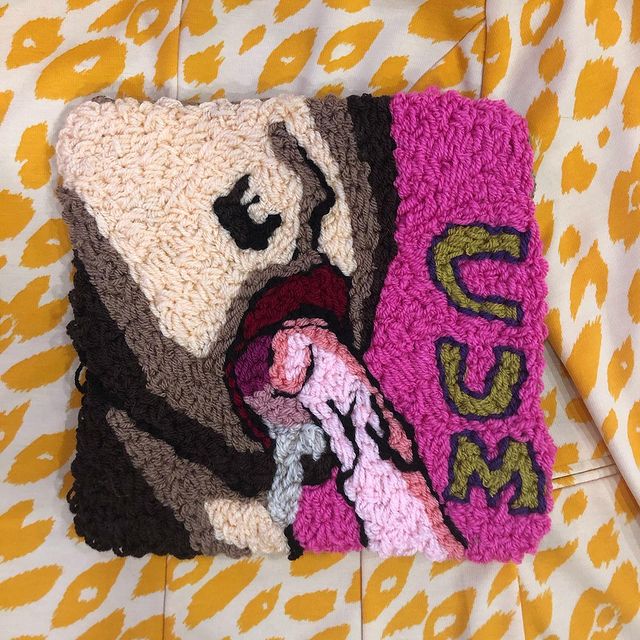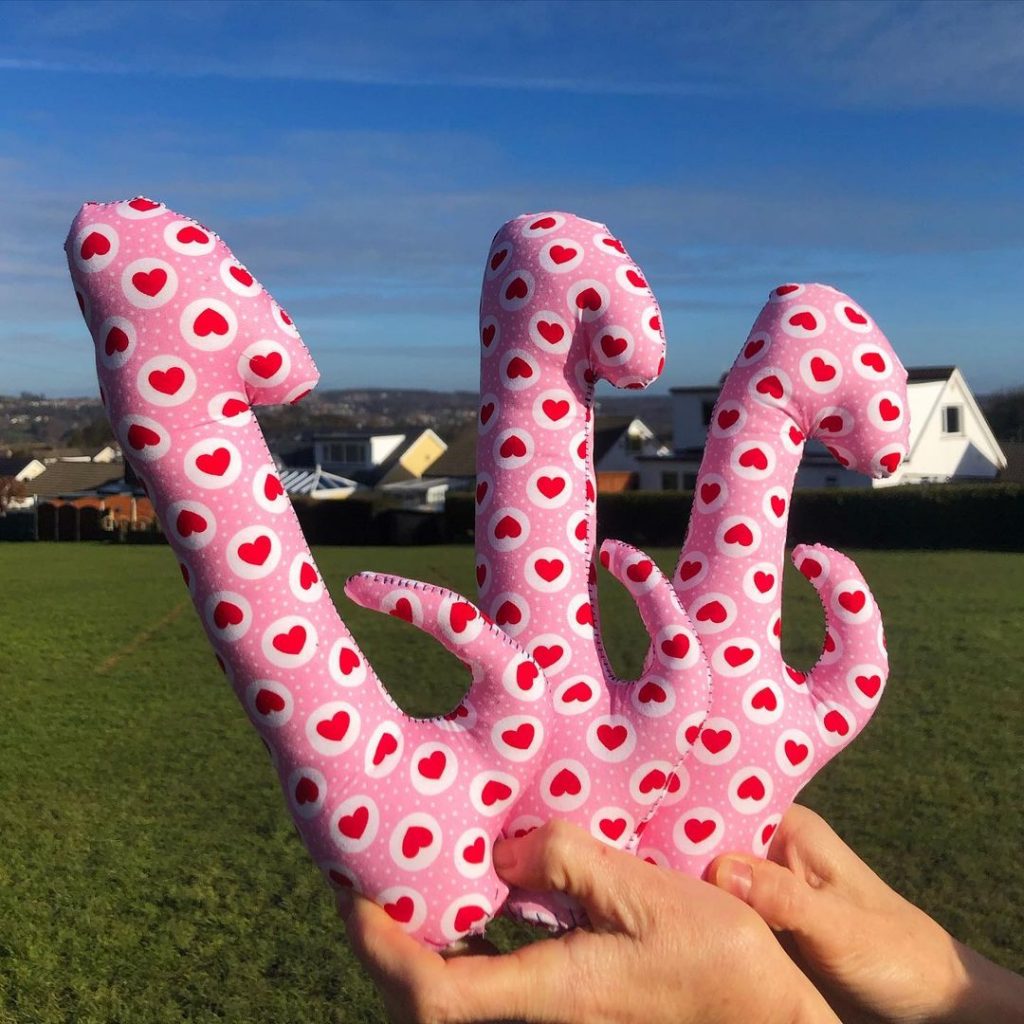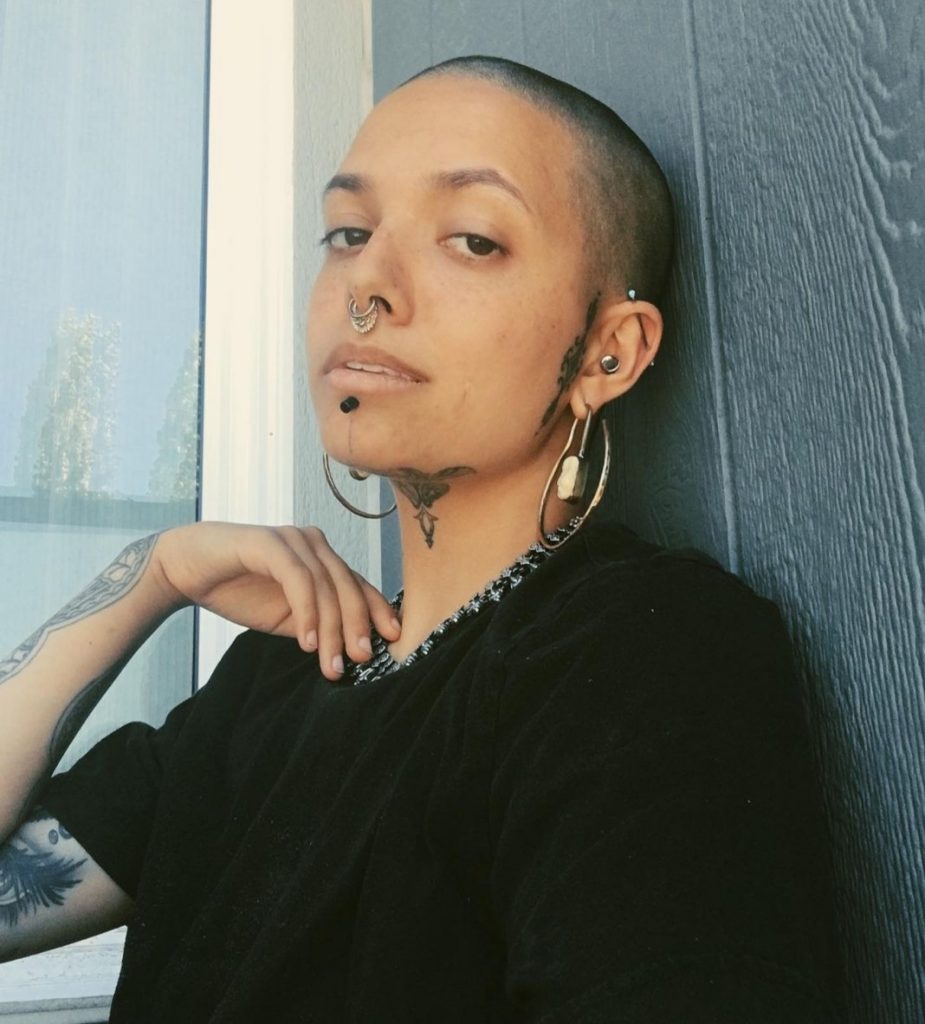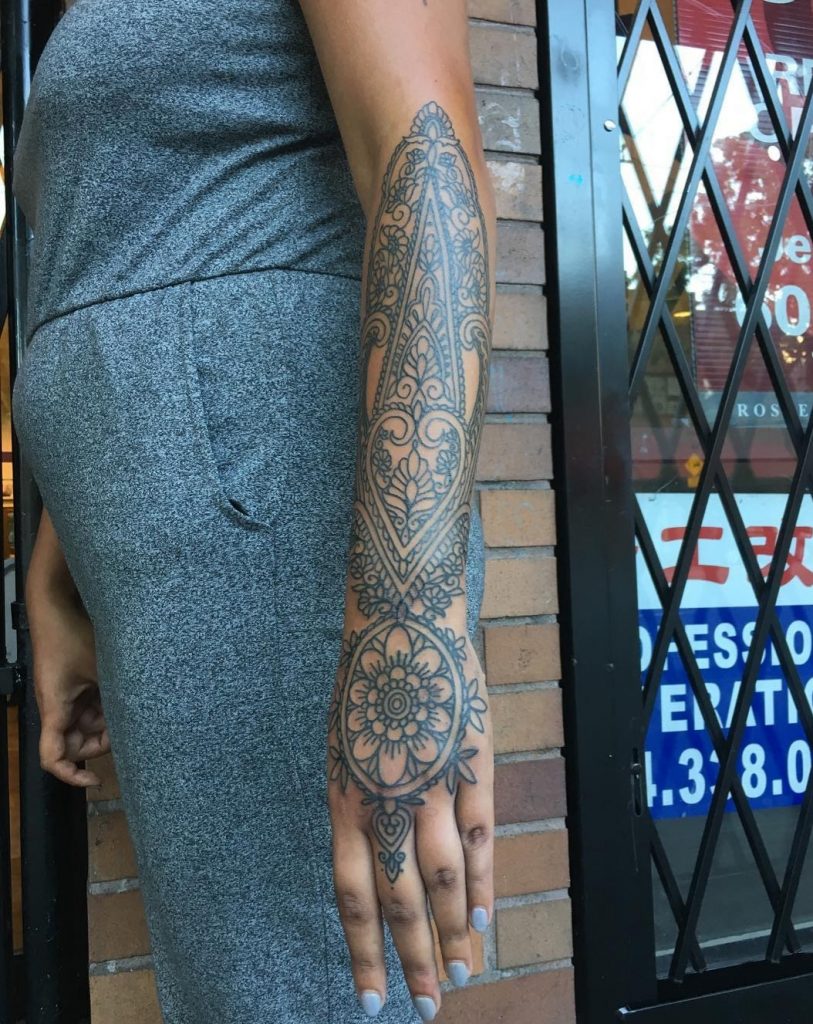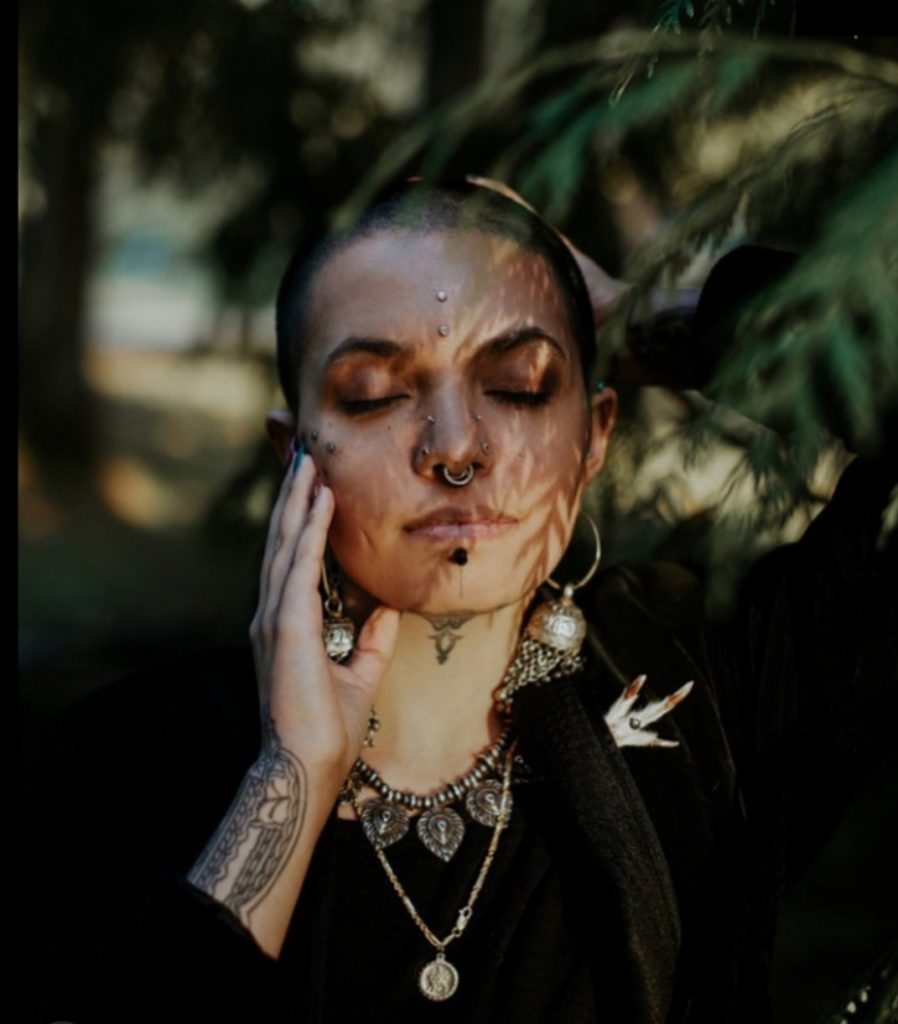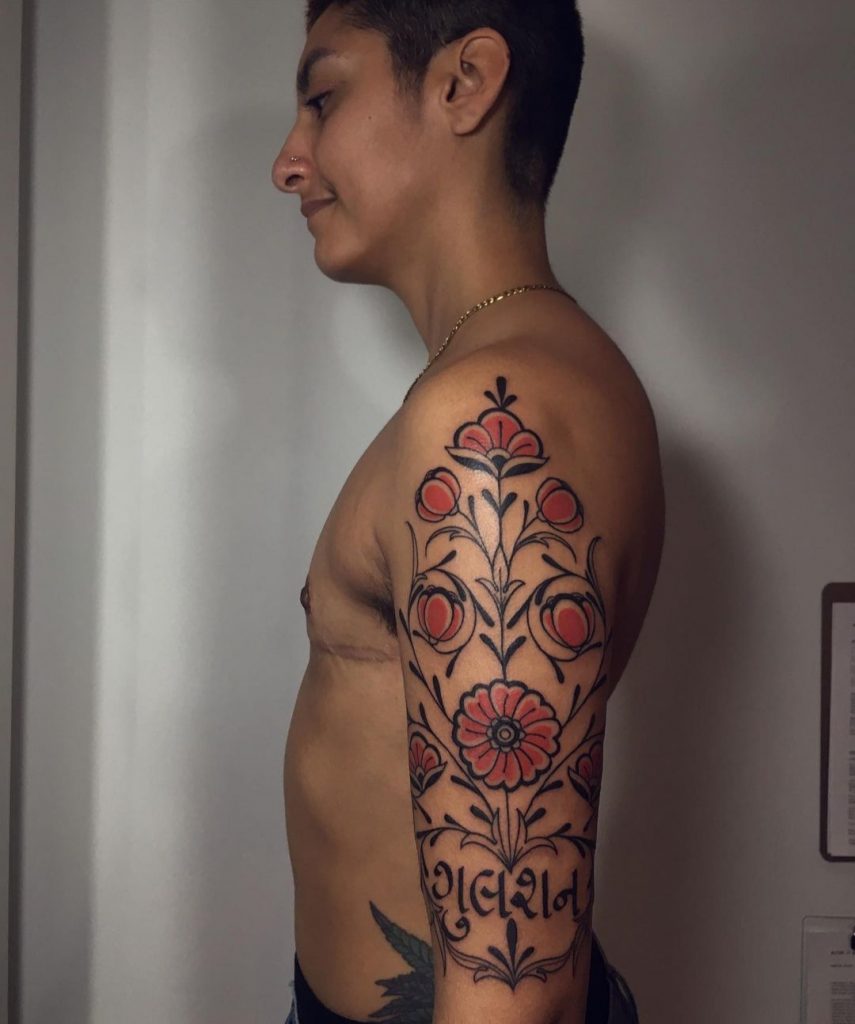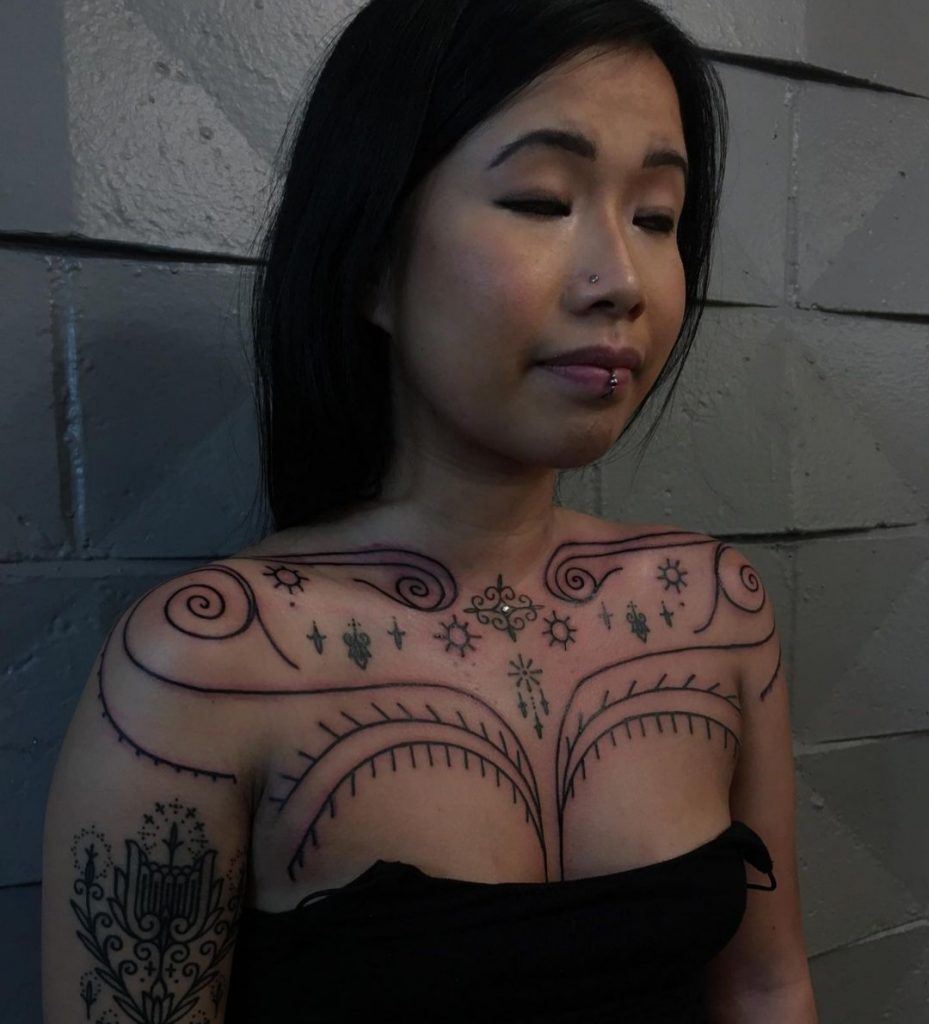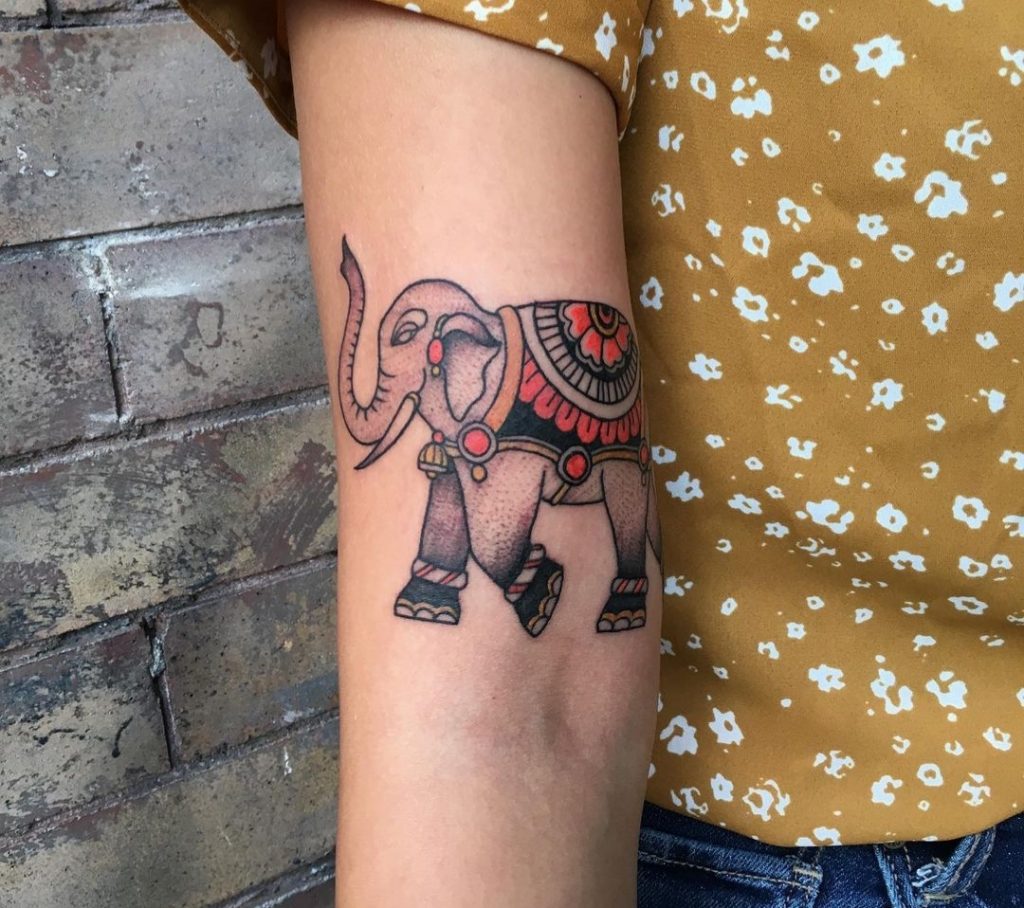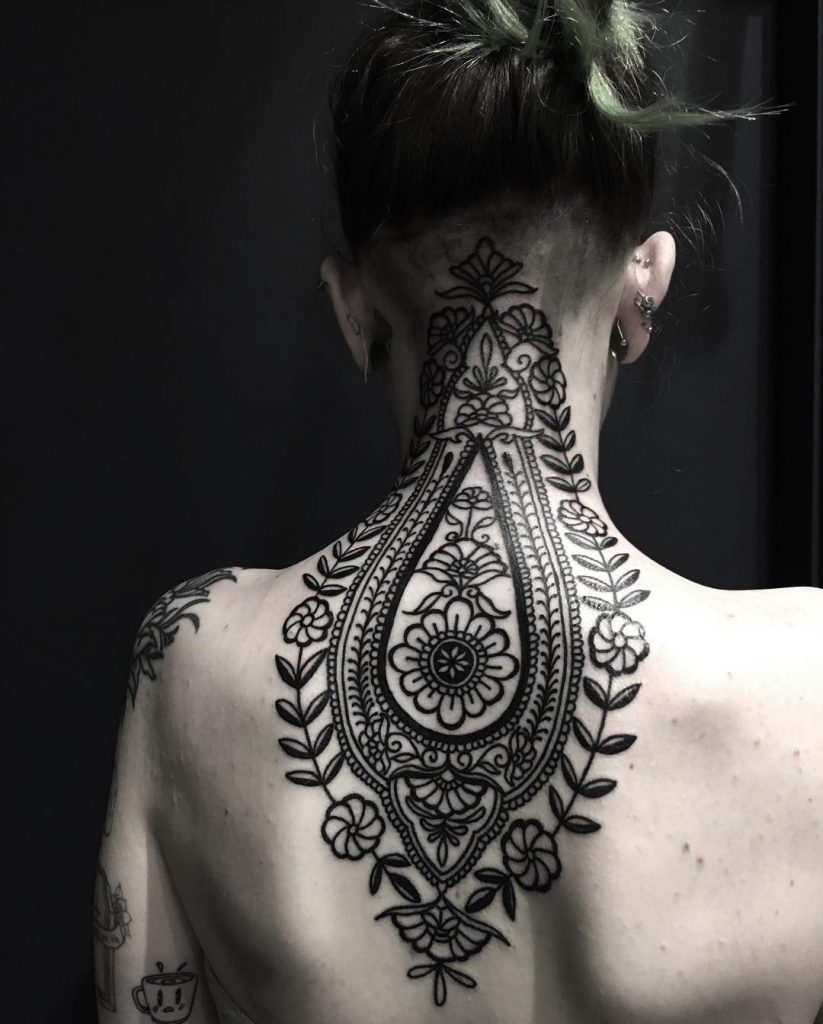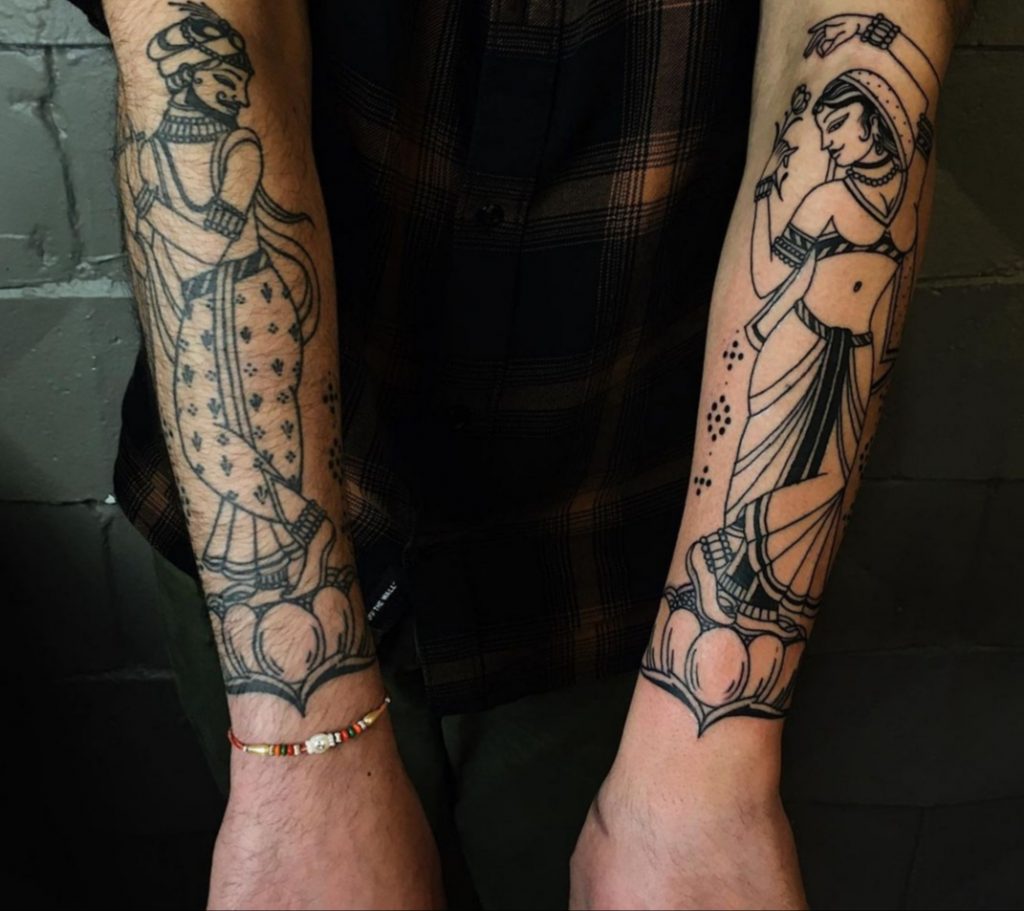Tattoo collector, writer and vintage fashion enthusiast, Carola Kolbeck (give her a follow @chameleoninhighheels) guides us through how to dress when we’re getting tattooed…
There are many important things to consider when getting a tattoo. First of all, the artwork itself and where it will grace your body for the rest of its life – and yours. Then, you need to find the right tattoo artist and have a few conversations with them about your idea and their take on it. Once you’ve paid your deposit and waited in giddy anticipation, the day has arrived and you’ll be getting ready, full of that indescribable excitement only an imminent new tattoo can evoke. And right at this point, we may forget another important question to ask ourselves: What should I wear when getting a tattoo?
It may sound like such a benign thing, shallow even, to think about an outfit for your big day in the tattoo studio. It’s certainly not because your artist will rank you on a list of ‘best-dressed’, nor will they care about your sense of fashion. But given that their canvas is your body, they’ll have some thoughts on your foresight on making their job as easy and pain-free for them as possible. So, what are the sartorial recommendations of the professionals for a comfortable and seamless experience in the tattoo chair?
Tattoo artist Steph Hesketh, co-owner of Evergreen Tattoo Studio in Coventry, has been tattooing for over 15 years and is the creator of six of my tattoos. Most recently, she designed and tattooed pointe ballet shoes on my leg, marking my lifelong love for ballet and dance.
Steph isn’t just one of the most amazing artists I have ever met, she also has a wealth of experience from seeing hundreds of clients in her chair over the years. Needless to say, when it comes to outfits, she’s seen it all: the good, the impractical, and the downright useless. I asked her professional opinion and suggestions on what to wear and what not to wear, depending on where you’re having your new body art.
Tattoos on your arms and legs
Generally, when it comes to getting your limbs tattooed, opt for tank tops, t-shirts, shorts or skirts in summer, and loose tops and trousers that can easily be rolled up and out of the way of the artist and the placement of your new tattoo. “We don’t mind you bringing anything that makes you more comfortable, like slippers, blankets, pillows, or towels,” says Steph, and also confirms that taking off your shoes for long sittings is completely fine.
Hand tattoos
“Be prepared to remove jewellery for the tattoo process,” warns Steph. “Rings should be removed if you’re having a lot of work on your hands done. That’s not just for hygiene reasons, but also because any swelling could cut off the blood supply to your fingers if the rings are too tight.”
Foot tattoos
When you’re getting your feet tattooed, your main concern should be with what shoes to wear after, when you’re on your way home. Chances are, the area will be tender and swollen, so you don’t want to squeeze into a tight pair of boots or trainers. Wide and roomy shoes are best, or sandals that won’t rub and aggravate the affected area.
But what about those more hidden areas on your torso – what’s the best sartorial choice without compromising on comfort and dignity?
Neck tattoos
No roll-neck jumpers for this one, please! A tank top or vest is best, and a blanket in case you get cold. Also if you have long hair, bring clips and hair ties, advises Steph. That’s not just helpful when you’re getting a neck tattoo, but also if you get tattooed anywhere near your hair, such as upper arms, shoulders, chest, back, and ears.
Full back tattoo
A button-up shirt worn backward is ideal, or if the back piece incorporates the bum, then a dressing gown worn the same way is a suitable choice. If dressing gowns outside your home aren’t your thing, then wearing joggers or bottoms with loose, stretchy waistbands will also work. They can be easily pulled down to give the artist plenty of space.
Breast and chest tattoo
Here, a button-up shirt worn the traditional way is ideal, and you may want to combine it with nipple covers or pasties. Those pasties are adhesive stickers you can place over your nipples; you may well have seen them in various designs on celebrities wearing sheer garments on the red carpet. Generally, the pasties are provided by your artist but if you’re unsure, make sure to check with them when you book your appointment. In addition, think about bringing a big scarf or pashmina. If you get chilly, you can wrap it around your shoulders, or stomach area while getting your upper chest piece.
Bottom
Bring your dressing gown or a kimono to be worn back to front. You should also make sure you wear stretchy underwear that can be pulled aside if the artist is only working on one cheek. If your whole bottom is covered, then thongs and g-strings are best, so both sides of your derriere are visible to the artist. If you think you’ll feel uncomfortable or any areas may be exposed, bring a large scarf so the artist can drape it across those body parts.
Private parts
If your tattoo is close to your nether regions, tighty-whities are not going to make for a comfortable experience. Stretchy underwear or tie-side bikini bottoms will ensure there are no awkward conversations about the artist being able to do their work. The advantage of tie-side pants: your artist can tape them in place to make sure they don’t fall down when you have to move.
Process of elimination is often helpful when you start thinking about your outfit choices when getting tattooed, so what, according to Steph, should you be leaving in your wardrobe?
Steer clear of anything white, brand new, expensive designer gear, and precious clothes and shoes. Although tattoo artists are meticulous and conscious people, at times, ink can transfer to your clothing and it will be difficult to wash out.
Leave anything uncomfortable or super-tight at home. You can wear that swag again when your tattoo is fully healed and ready to be admired in its eternal glory.
In the end, Steph says, “The most important thing is to think where your tattoo is going. Wear something loose and comfortable that gives us plenty of access not just around the immediate area that’s being worked on, but also the surrounding area. We need to place stencils without stretching the skin and want to see that your tattoo is central, straight, and exactly where it needs to be.”
Clothes are an important part of who we are and should reflect our personalities. Just bear in mind that not every outfit choice is ideal for a trip to the tattoo studio. Keep it comfy, loose and practical. And remember: when you’ve got a tattoo, you’re always looking the part.
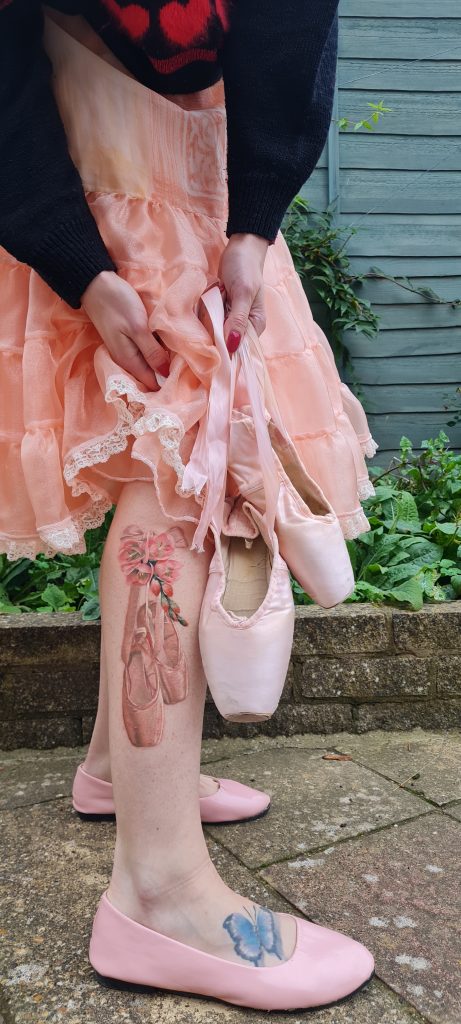
Give Steph an Insta follow @stephhesketh
We’re always talking to amazing tattoo artists, check out our latest interviews.
